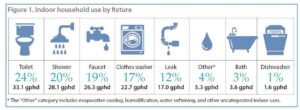Water Calculations
Water calculations play a vital role in determining the water demand and usage patterns of buildings. By facilitating the design of efficient and sustainable water systems, these calculations help ensure compliance with water efficiency standards, reduce overall consumption, and promote responsible resource management. Moreover, accurate water calculations are especially important for new residential buildings, as they significantly minimize environmental impact.
What is a Water Calculation?
A water calculation estimates a building’s water demand by considering various factors, including fixture flow rates, occupancy levels, and water-saving technologies. Consequently, builders must conduct these calculations during the planning phase to align with local regulations and meet water efficiency goals.
In detail, water calculations analyze fixture flow rates from taps, showers, and toilets. Understanding these rates enables builders to select fixtures that strike the right balance between functionality and conservation. Additionally, occupancy rates, which indicate how often and how much water is used, directly influence the design of the water system. Furthermore, building size and location also affect water demand, often requiring specific conservation measures, particularly in areas with limited water resources.
Do I Need a Water Calculation?
Indeed, new builds and major refurbishments require water calculations to meet established efficiency standards and secure necessary regulatory approvals. For instance, green building certifications, such as BREEAM, often consider water calculations a crucial criterion. Therefore, by conducting these calculations early in the project, builders can ensure that their designs comply with regulations and avoid potential delays.
To achieve compliance, builders must meet specific water usage targets that vary based on the desired efficiency levels. For example, achieving Levels 1 and 2 requires water use of up to 120 liters per person per day, while Levels 3 and 4 target 105 liters, and Levels 5 and 6 require 80 liters or less. By meeting these targets, builders not only enhance their compliance efforts but also contribute to overall water conservation.

The Importance of Water Calculations
Ultimately, water calculations are essential for designing efficient water systems in new builds. By accurately estimating water demand, builders can optimize usage, reduce costs, and minimize their environmental impact. For instance, installing water-efficient fixtures can lead to reductions in consumption by up to 30%, resulting in significant savings.
In addition, these calculations assist builders in meeting regulatory standards, thereby streamlining the approval process for projects and enhancing their sustainability credentials. This focus on efficiency aligns with the growing demand for eco-friendly construction practices.
Challenges and Solutions
Nevertheless, estimating water demand can be complex, particularly for buildings with fluctuating occupancy rates. Therefore, builders must obtain reliable data on fixture flow rates and occupancy to ensure precise calculations.
To address these challenges, effective planning and collaboration with water engineers are essential. Utilizing advanced technologies, such as smart meters for real-time data, enables builders to refine their water demand estimates. Furthermore, by integrating efficient fixtures, builders can ensure that actual water use aligns with the design, ultimately creating sustainable and cost-effective buildings.
Summary
In conclusion, water calculations are a key component in designing sustainable water systems for new buildings. By accurately estimating demand, optimizing usage, and ensuring compliance with regulations, builders can significantly reduce water waste while supporting broader conservation efforts. Starting these calculations early equips new builds for long-term efficiency, benefiting both the environment and property owners.
Our team stands ready to assist you with water calculations, ensuring you meet efficiency standards while creating sustainable building projects. Whether you are planning a new build or a major refurbishment, our expertise guarantees that your project adheres to necessary water efficiency requirements, ultimately contributing to a greener future.